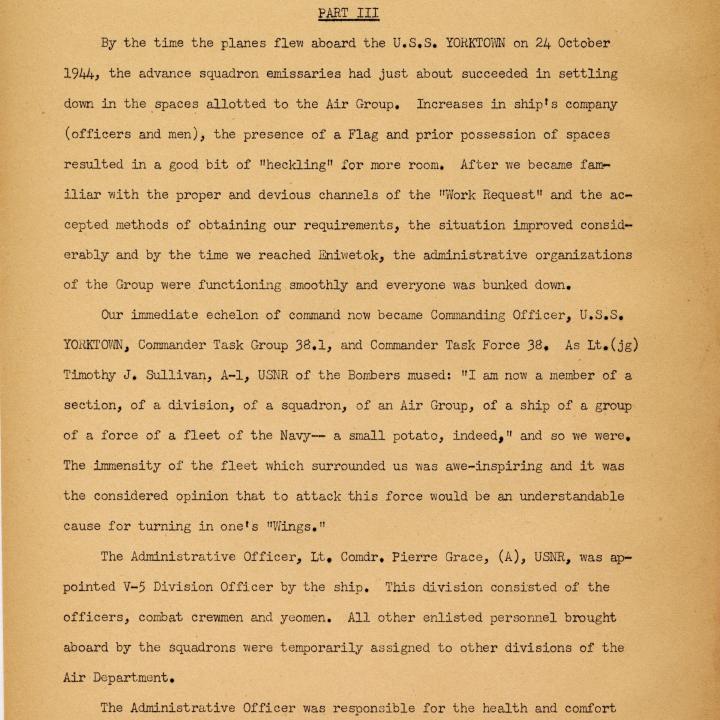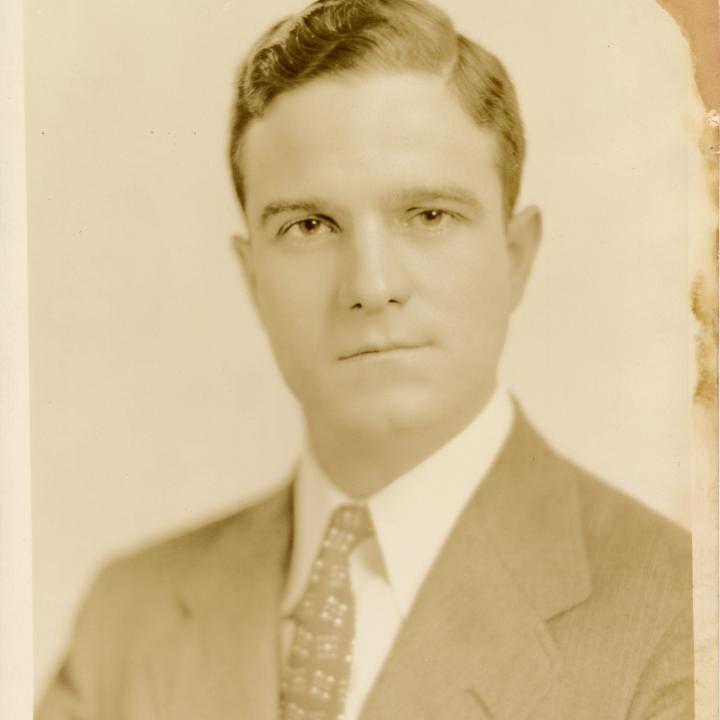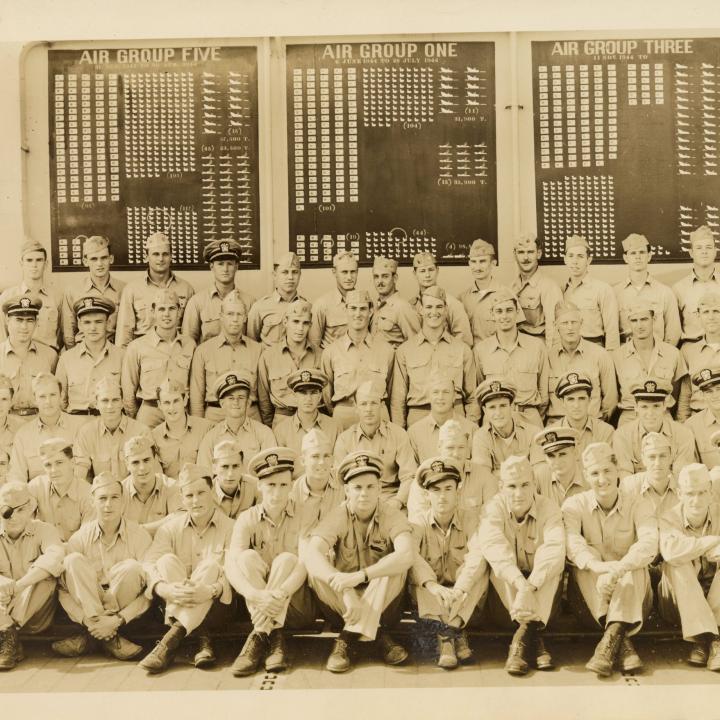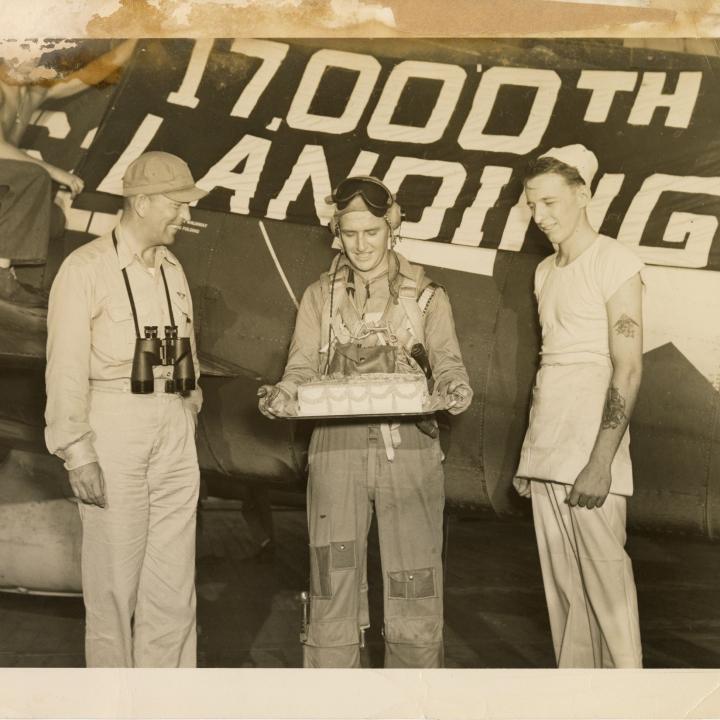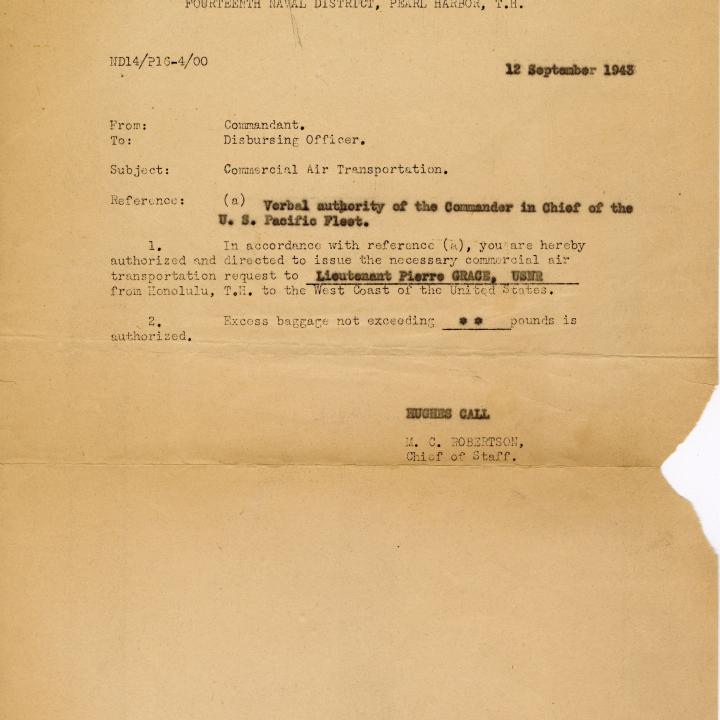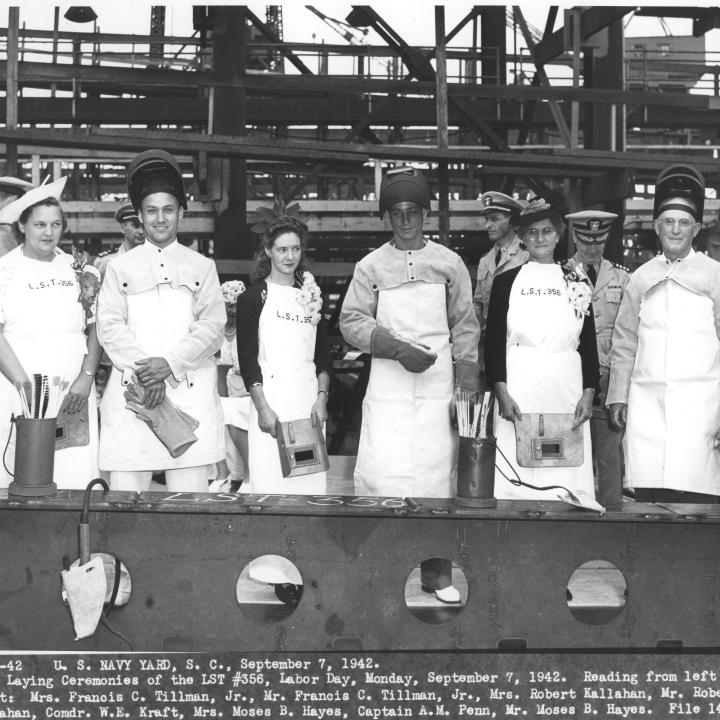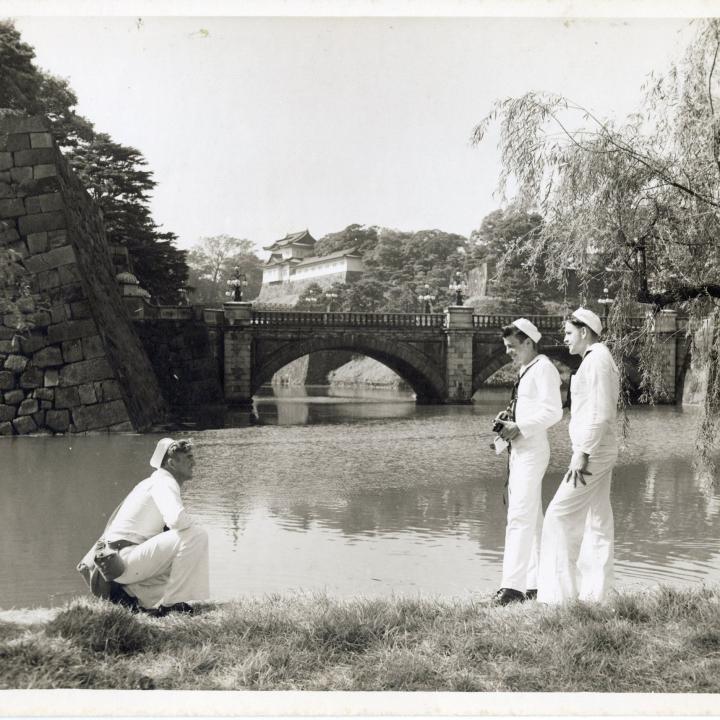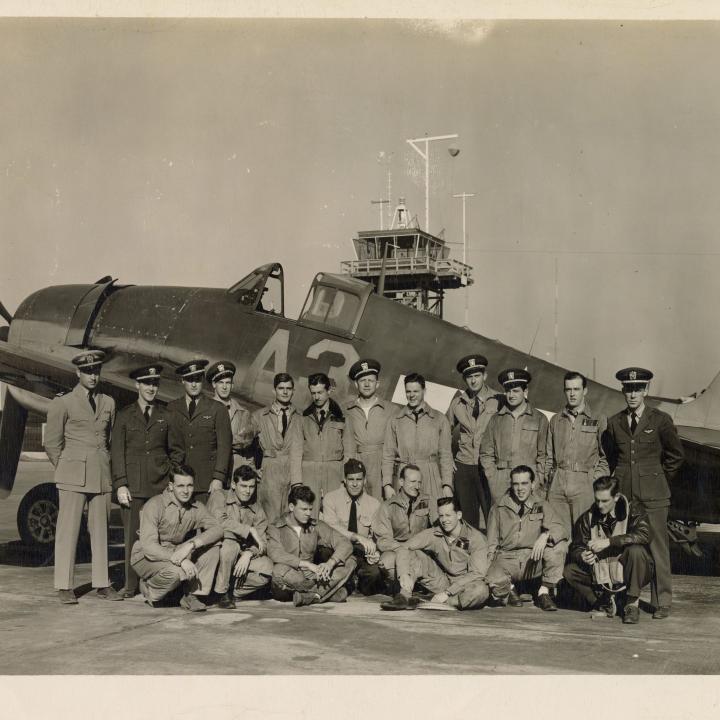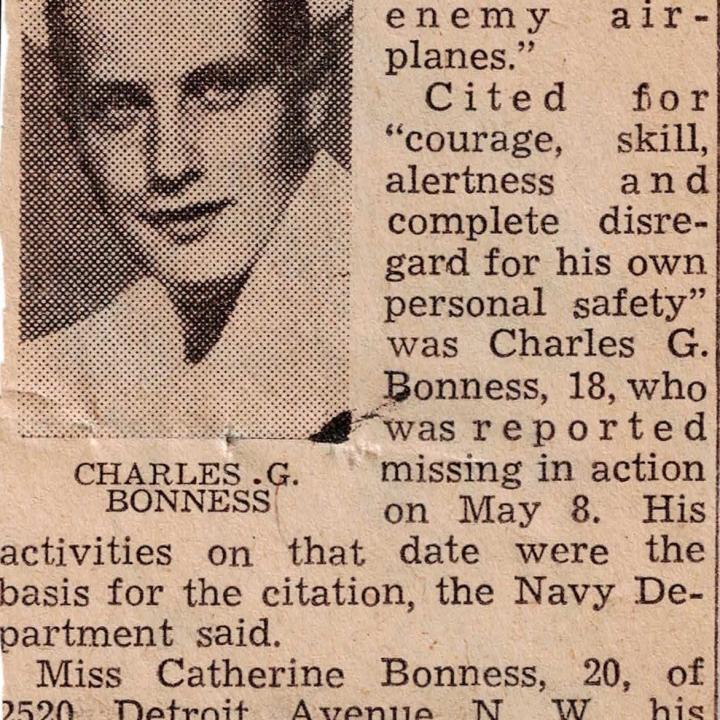From the Collections
Writing with Grace: Pierre Grace and Carrier Air Group 3
Few positions in the history of World War II have been as highlighted or as celebrated as the pilots who flew in some of the most consequential combat flights of all time. Still, these pilots were only a portion of the men within each carrier air group. In addition to the rear gunners, radio operators, and flight crew, there were also designated non-flying pilots. These officers were typically older and served in support roles to the actively flying pilots. This allowed the United States to always have seasoned voices in the ready room to share their experiences and knowledge with the next group of new pilots.
Pierre Grace was one of these non-flying pilots serving with Carrier Air Group 3 stationed aboard the USS Yorktown (CV-10) from October 1944 to March 1945. As the administrative officer of the air group, one of Pierre’s responsibilities was to write the official history of Air Group 3. These were requested by the Navy as official documentation of the air group’s wartime service. While not as personal as the “unofficial histories” that many air groups would write postwar, the official narrative provides a look into the day-to-day operations of the Navy’s carrier air groups. They had a particular focus on the challenges faced during deployment and how improvements could be made to avoid these issues in the future.
The experience and service of non-flying pilots like Pierre Grace provided was a vital part of the American war effort. One of the Yorktown’s chaplains, J.N. Moody described Pierre’s service with, “He quietly accomplished everything without a word of complaint. It was a pleasure to work with him and I hate to see him go.” The contributions of America’s non-flying pilots were irreplaceable to their fellow crewmen and the pilots that they mentored.
Pierre Grace was one of these non-flying pilots serving with Carrier Air Group 3 stationed aboard the USS Yorktown (CV-10) from October 1944 to March 1945. As the administrative officer of the air group, one of Pierre’s responsibilities was to write the official history of Air Group 3. These were requested by the Navy as official documentation of the air group’s wartime service. While not as personal as the “unofficial histories” that many air groups would write postwar, the official narrative provides a look into the day-to-day operations of the Navy’s carrier air groups. They had a particular focus on the challenges faced during deployment and how improvements could be made to avoid these issues in the future.
The experience and service of non-flying pilots like Pierre Grace provided was a vital part of the American war effort. One of the Yorktown’s chaplains, J.N. Moody described Pierre’s service with, “He quietly accomplished everything without a word of complaint. It was a pleasure to work with him and I hate to see him go.” The contributions of America’s non-flying pilots were irreplaceable to their fellow crewmen and the pilots that they mentored.
